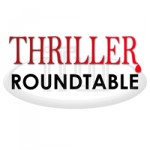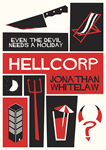

August 27 – September 2: “How do you raise the stakes to the next level?”
 This week we’re joined by ITW members James Hilton, Kit Frick, Mysti Berry, David Simms, Frank Zafiro, Ronie Kendig, Connie di Marco and Jonathan Whitelaw, and we’re asking them “How do you raise the stakes to the next level?” Scroll down to the “comments” section and follow along – you won’t want to miss this!
This week we’re joined by ITW members James Hilton, Kit Frick, Mysti Berry, David Simms, Frank Zafiro, Ronie Kendig, Connie di Marco and Jonathan Whitelaw, and we’re asking them “How do you raise the stakes to the next level?” Scroll down to the “comments” section and follow along – you won’t want to miss this!
 Frank Zafiro was a police officer from 1993 to 2013. He is the author of more than 20 novels, mostly crime fiction, including the River City series and the Ania series. In addition to writing, Frank hosts the crime fiction podcast Wrong Place, Write Crime. He is an avid hockey fan and a tortured guitarist. He currently lives in Redmond, Oregon.
Frank Zafiro was a police officer from 1993 to 2013. He is the author of more than 20 novels, mostly crime fiction, including the River City series and the Ania series. In addition to writing, Frank hosts the crime fiction podcast Wrong Place, Write Crime. He is an avid hockey fan and a tortured guitarist. He currently lives in Redmond, Oregon.
 David Simms lives in the Shenandoah Valley of Virginia with his wife, son, and animals. He works as a teacher, counselor, music therapist, ghost tour guide, book reviewer, and founding guitarist in the Killer Thriller Band/Slushpile band. FEAR THE REAPER is his second novel.
David Simms lives in the Shenandoah Valley of Virginia with his wife, son, and animals. He works as a teacher, counselor, music therapist, ghost tour guide, book reviewer, and founding guitarist in the Killer Thriller Band/Slushpile band. FEAR THE REAPER is his second novel.
 Mysti Berry has short fiction published in many anthologies including Ellery Queen Mystery Magazine, should be published again in 2019 in Alfred Hitchcock Mystery Magazine, and just published a charity anthology Low Down Dirty Vote, with stories by Catriona McPherson, James W. Ziskin and many other talented writers. She lives in San Francisco with graphic novelist Dale Berry and three black rescue cats, and she’s looking forward to ThrillerFest 2019.
Mysti Berry has short fiction published in many anthologies including Ellery Queen Mystery Magazine, should be published again in 2019 in Alfred Hitchcock Mystery Magazine, and just published a charity anthology Low Down Dirty Vote, with stories by Catriona McPherson, James W. Ziskin and many other talented writers. She lives in San Francisco with graphic novelist Dale Berry and three black rescue cats, and she’s looking forward to ThrillerFest 2019.
 James Hilton lives in the rugged but beautiful North of England. He is currently working on the next book in the ‘Gunn Brothers Thriller’ series from Titan Books and also researching material for the first book in a new YA series. James trained in the martial arts since the age of 11 and is currently ranked as a 4th dan Blackbelt. His other passions include visiting Florida and the Caribbean, reading horror, suspense and action thrillers.
James Hilton lives in the rugged but beautiful North of England. He is currently working on the next book in the ‘Gunn Brothers Thriller’ series from Titan Books and also researching material for the first book in a new YA series. James trained in the martial arts since the age of 11 and is currently ranked as a 4th dan Blackbelt. His other passions include visiting Florida and the Caribbean, reading horror, suspense and action thrillers.
 Ronie Kendig is an award-winning, bestselling author of over twenty titles. She grew up an army brat, and now she and her army-veteran husband live a short train ride from New York City with their children and retired military working dog.
Ronie Kendig is an award-winning, bestselling author of over twenty titles. She grew up an army brat, and now she and her army-veteran husband live a short train ride from New York City with their children and retired military working dog.
 Kit Frick is a novelist, poet, and MacDowell Colony fellow. Originally from Pittsburgh, PA, she studied creative writing at Sarah Lawrence College and received her MFA from Syracuse University. When she isn’t putting complicated characters in impossible situations, Kit edits poetry and literary fiction for a small press, edits for private clients, and mentors emerging writers through Pitch Wars. Her debut young adult novel is See All the Stars (Simon & Schuster / Margaret K. McElderry Books, 2018).
Kit Frick is a novelist, poet, and MacDowell Colony fellow. Originally from Pittsburgh, PA, she studied creative writing at Sarah Lawrence College and received her MFA from Syracuse University. When she isn’t putting complicated characters in impossible situations, Kit edits poetry and literary fiction for a small press, edits for private clients, and mentors emerging writers through Pitch Wars. Her debut young adult novel is See All the Stars (Simon & Schuster / Margaret K. McElderry Books, 2018).
 Connie di Marco is the author of the Zodiac Mysteries from Midnight Ink featuring San Francisco astrologer Julia Bonatti. Tail of the Dragon, third in the series, was released in August 2018. Writing as Connie Archer, she is also the author of the national bestselling Soup Lover’s Mysteries from Berkley Prime Crime. You can find her excerpts and recipes in The Cozy Cookbook and The Mystery Writers of America Cookbook. Connie is a member of MWA, Sisters in Crime and International Thriller Writers.
Connie di Marco is the author of the Zodiac Mysteries from Midnight Ink featuring San Francisco astrologer Julia Bonatti. Tail of the Dragon, third in the series, was released in August 2018. Writing as Connie Archer, she is also the author of the national bestselling Soup Lover’s Mysteries from Berkley Prime Crime. You can find her excerpts and recipes in The Cozy Cookbook and The Mystery Writers of America Cookbook. Connie is a member of MWA, Sisters in Crime and International Thriller Writers.
 Jonathan Whitelaw is an author, journalist and broadcaster. After working on the frontline of Scottish politics, he moved into journalism. Subjects he has covered have varied from breaking news, the arts, culture and sport to fashion, music and even radioactive waste – with everything in between. He’s also a regular reviewer and talking head on shows for the BBC and STV. HellCorp is his second novel following his debut, Morbid Relations.
Jonathan Whitelaw is an author, journalist and broadcaster. After working on the frontline of Scottish politics, he moved into journalism. Subjects he has covered have varied from breaking news, the arts, culture and sport to fashion, music and even radioactive waste – with everything in between. He’s also a regular reviewer and talking head on shows for the BBC and STV. HellCorp is his second novel following his debut, Morbid Relations.
- LAST GIRL MISSING with K.L. Murphy - July 25, 2024
- CHILD OF DUST with Yigal Zur - July 25, 2024
- THE RAVENWOOD CONSPIRACY with Michael Siverling - July 19, 2024
